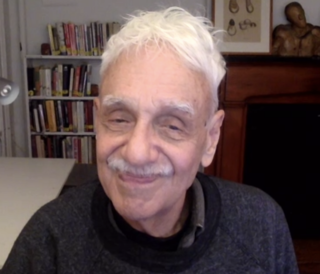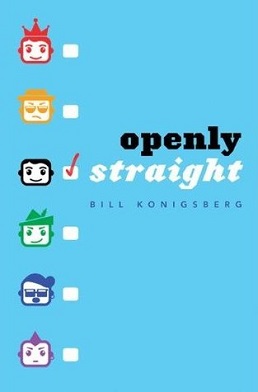
The field of psychology has extensively studied homosexuality as a human sexual orientation. The American Psychiatric Association listed homosexuality in the DSM-I in 1952 as a "sociopathic personality disturbance," but that classification came under scrutiny in research funded by the National Institute of Mental Health. That research and subsequent studies consistently failed to produce any empirical or scientific basis for regarding homosexuality as anything other than a natural and normal sexual orientation that is a healthy and positive expression of human sexuality. As a result of this scientific research, the American Psychiatric Association removed homosexuality from the DSM-II in 1973. Upon a thorough review of the scientific data, the American Psychological Association followed in 1975 and also called on all mental health professionals to take the lead in "removing the stigma of mental illness that has long been associated" with homosexuality. In 1993, the National Association of Social Workers adopted the same position as the American Psychiatric Association and the American Psychological Association, in recognition of scientific evidence. The World Health Organization, which listed homosexuality in the ICD-9 in 1977, removed homosexuality from the ICD-10 which was endorsed by the 43rd World Health Assembly on 17 May 1990.

LGBT themes in speculative fiction include lesbian, gay, bisexual, or transgender (LGBTQ) themes in science fiction, fantasy, horror fiction and related genres.[a] Such elements may include an LGBT character as the protagonist or a major character, or explorations of sexuality or gender that deviate from the heteronormative.

Gay literature is a collective term for literature produced by or for the gay community which involves characters, plot lines, and/or themes portraying male homosexual behavior.

Jonathan Ned Katz is an American author of human sexuality who has focused on same-sex attraction and changes in the social organization of sexuality over time. His works focus on the idea, rooted in social constructionism, that the categories with which society describes and defines human sexuality are historically and culturally specific, along with the social organization of sexual activity, desire, relationships, and sexual identities.

LGBTQ themes in horror fiction refers to sexuality in horror fiction that can often focus on LGBTQ+ characters and themes within various forms of media. It may deal with characters who are coded as or who are openly LGBTQ+, or it may deal with themes or plots that are specific to gender and sexual minorities.

In comics, LGBT themes are a relatively new concept, as lesbian, gay, bisexual, and transgender (LGBTQ) themes and characters were historically omitted from the content of comic books and their comic strip predecessors due to anti-gay censorship. LGBT existence was included only via innuendo, subtext and inference. However the practice of hiding LGBT characters in the early part of the twentieth century evolved into open inclusion in the late twentieth and early twenty-first centuries, and comics explored the challenges of coming-out, societal discrimination, and personal and romantic relationships between gay characters.
Gay teen fiction is a subgenre that overlaps with LGBTQ+ literature and young adult literature. This article covers books about gay and bisexual teenage characters who are male.

Homosexuality is sexual attraction, romantic attraction, or sexual behavior between members of the same sex or gender. As a sexual orientation, homosexuality is "an enduring pattern of emotional, romantic, and/or sexual attractions" exclusively to people of the same sex or gender. It "also refers to a person's sense of identity based on those attractions, related behaviors, and membership in a community of others who share those attractions."

John Eastburn Boswell was an American historian and a full professor at Yale University. Many of Boswell's studies focused on the issue of religion and homosexuality, specifically Christianity and homosexuality. All of his work focused on the history of those at the margins of society.

Lesbian literature is a subgenre of literature addressing lesbian themes. It includes poetry, plays, fiction addressing lesbian characters, and non-fiction about lesbian-interest topics. A similar term is sapphic literature, encompassing works that feature love between women that are not necessarily lesbian.

Hard Love is a young adult novel written by author Ellen Wittlinger. It was published in 1999.
Lesbian portrayal in media is generally in relation to feminism, love and sexual relationships, marriage and parenting. Some writers have stated that lesbians have often been depicted as exploitative and unjustified plot devices. Common representations of lesbians in the media include butch or femme lesbians and lesbian parents. "Butch" lesbian comes from the idea of a lesbian expressing themselves as masculine by dressing masculine, behaving masculinely, or liking things that are deemed masculine, while "femme" lesbian comes from the idea of a lesbian expressing themselves as feminine by dressing feminine, behaving femininely, or liking things that are deemed feminine.

This is a list of important events relating to the LGBT community from 1801 to 1900. The earliest published studies of lesbian activity were written in the early 19th century.

The Vast Fields of Ordinary is a young adult gay novel by American author Nick Burd first published in 2009. The novel depicts the summer after high school graduation for a closeted suburban teenage boy, his openly lesbian new best friend, and the two boys he is interested in dating. The Vast Fields of Ordinary is Burd's debut novel.

Bill Konigsberg is an American author, best known for his LGBT novels. He wrote Out of the Pocket, Openly Straight, The Porcupine of Truth, Honestly Ben, The Music of What Happens, and The Bridge. He lives with his husband outside of Phoenix, Arizona.

Peter Brown is an American writer and illustrator who is best known for children's picture books. He won a Caldecott Honor in 2013 for his illustration of Creepy Carrots!
Bisexual literature is a subgenre of LGBTQ literature that includes literary works and authors that address the topic of bisexuality or biromanticism. This includes characters, plot lines, and/or themes portraying bisexual behavior in both men and women.

Openly Straight is a 2013 young adult novel and the second book by American author Bill Konigsberg. The coming-of-age story focuses on high school junior Rafe who has been openly gay since he was in the eighth grade. When he switches to a private all boys high school across the country in Massachusetts he decides to hide his sexuality from his new classmates. The novel has been translated into German, Vietnamese, and Portuguese.

Flamer is a semi-autobiographical graphic novel by Mike Curato. It is set in 1995, in a Boy Scouts summer camp, and tells the story of Aiden, who is bullied for his appearance, including acting in a manner considered stereotypical of gay men. Curato was a scout and based his experience as a closeted teenager to write the novel.















